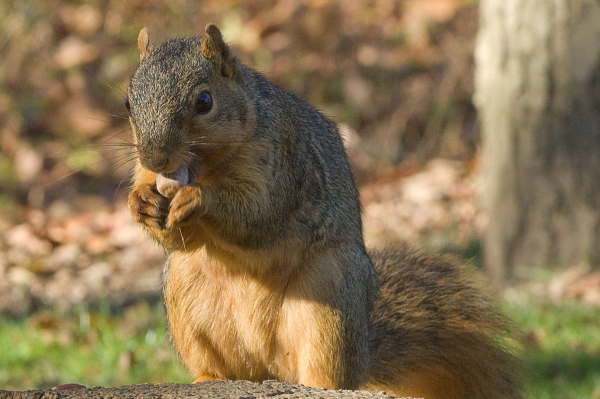Grouse and woodcock hunting hot spots in southeast Michigan
While many people travel “up north” to find grouse and woodcock hunting opportunities in Michigan, hunters may not know that there are some great grouse and woodcock hunting areas right in southeast Michigan. The Department of Natural Resources’ local wildlife biologists have scouted their respective game areas for the latest information on where to find the grouse and woodcock.
Biologists report excellent mast (wildlife food) production this year. Hard mast such as red and white oak acorns and soft mast like apples, wild grapes, dogwood and viburnum berries are above average. Grouse use the soft mast, especially, as a fall food source.
Hunters can expect to find grouse numbers comparable to last year. Woodcock numbers are largely dependent upon migrant birds, but locally produced birds can be found. Woodcock hunters should pay attention to weather patterns and plan hunts accordingly to take advantage of recently arrived birds.
St. Clair County
The Port Huron State Game Area (SGA) is dominated by mature hardwoods that follow the Black River corridor through the northern portion of St. Clair County. A modest amount of woodcock and grouse habitat is located south of M-69, but hunters may find pockets of grouse and woodcock in the brushy edges of openings among aspen, birch, cherry and dogwood. As woodcock migrate south, hunters should concentrate efforts in areas with young stands of aspen and mixed hardwoods, or where uplands transition to lowlands along alder/willow margins that follow stream corridors.
Huron County
At Verona SGA and Gagetown SGA, both early and late in the day, look for woodcock on field edges adjacent to young aspen (no larger than wrist-size at breast height), and lowland brush such as dogwood and willow. At mid-day look for woodcock in young aspen and young lowland hardwood stands with moist soils largely free of tall grasses and ferns. Grouse are present at Verona and Gagetown, but in low numbers. Focus grouse hunting efforts in young aspen and dogwood thickets.
Tuscola County
When hunting Deford, Tuscola and Vassar SGAs, focus efforts in young aspen stands anywhere they are found. The Deford SGA, in particular, has the best and most abundant cover for grouse and woodcock. Woodcock will be found where soils are generally moist. Young aspen can also be found on the Tuscola and Vassar SGAs, but suitable grouse and woodcock cover tends to be less concentrated. Intensive forest management efforts are planned to rectify that situation. Hunters on those areas should not overlook lowland brush associated with drainages, particularly on the Tuscola SGA. Murphy Lake SGA has mixed hardwoods with openings and lowland brush for moderate to spotty grouse and woodcock hunting.
Sanilac County
At Minden City and Sanilac SGAs, nearly 40 years of intensive forest management efforts have resulted in abundant young aspen cover suitable for both grouse and woodcock. Hunters should not overlook alder and willow swamps bordering uplands at the Minden City SGA for both grouse and woodcock.
Livingston, Oakland, Lapeer, Jackson and Washtenaw Counties
Oak Grove and Gregory SGAs (Livingston County), Holly State Recreation Area (Oakland County), Lapeer SGA (Lapeer County), Sharonville SGA and Waterloo State Recreation Area (Jackson/Washtenaw counties) support moderate to spotty grouse and woodcock hunting opportunities. These areas have mixed hardwoods with openings and lowland brush. Lapeer SGA does have areas with young aspen stands.
Hunters may choose to use Mi-HUNT, at www.michigan.gov/mihunt, to help plan their trip. Mi-HUNT is an interactive online mapping tool for those with limited scouting time to help target their field excursions. Aerial photos and cover type maps can assist hunters with finding the perfect spot to hunt without ever leaving home.
Grouse hunting is big business in Michigan. There were roughly 85,000 grouse hunters in Michigan in 2010, each spending more than $1,000 annually. This money was spent on gear, guns, ammunition, lodging, food and other items. It is estimated that grouse hunters contribute $108 million to the Michigan economy each year.






